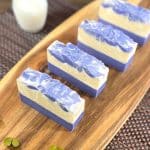
Lavender & Goats Milk Soap
A gorgeous lavender and goats milk soap recipe that is sure to have your skin feeling soft, smooth and smelling amazing all day
Print
Pin
Yield (adjustable): 6 bars
Ingredients:
Oils
- 465 grams (1.03 lb) Olive Oil
- 150 grams (5.29 oz) Lard Tallow
- 180 grams (6.35 oz) Coconut Oil
- 45 grams Castor Oil
- 45 grams (1.59 oz) Cocoa Butter
Lye Solution
- 126 grams (4.44 oz) Soapmaking Lye
- 252 grams (8.89 oz) Distilled Water
Additives & Aromatics
- 2 tbsp (0.06 pt) Goats Milk Powdered
- 1 tsp (0.01 pt) Mica Powders Purple
- 28 grams (0.99 oz) Lavender Essential Oil
Equipment:
Instructions:
Making Lye Solution
- Make sure you are making the soap in a well-ventilated area. Put on your gloves and eye protection, mask, apron, and long rubber gloves. Then, begin by weighing the distilled water into a clean container. Never use a glass container, as this will hold the lye water. Lye can weaken glass so it can easily break. In a separate container, weigh your sodium hydroxide/lye crystals.
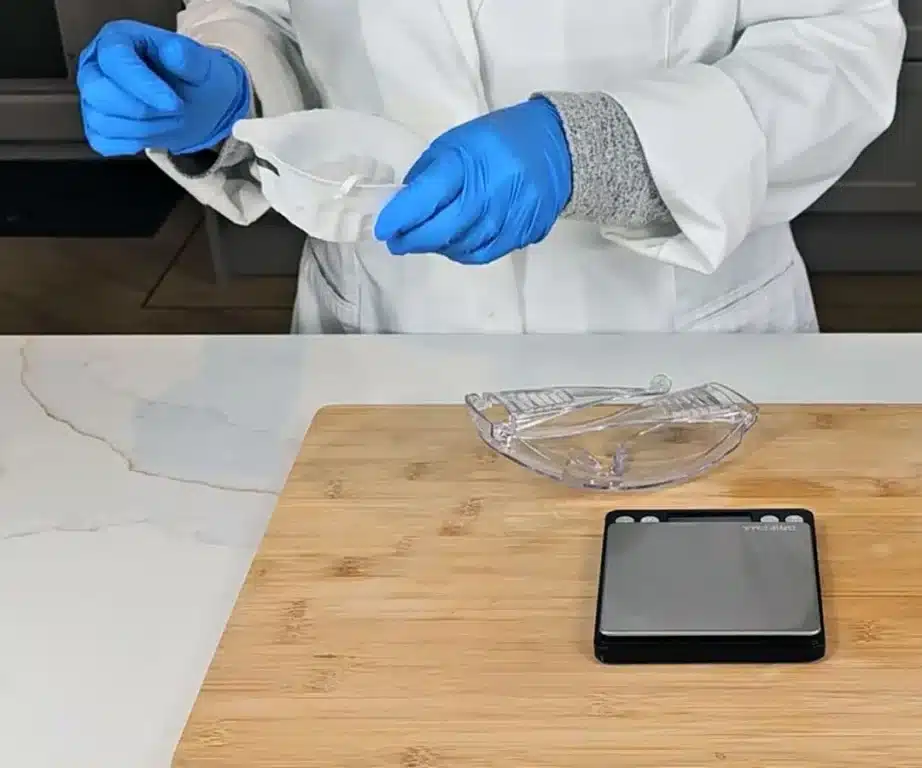
- Weigh the essential oils and place them in a small glass container, setting it aside for later use. Then, weigh and place the tsp of mica into a separate small container and pop that to one side, When you’re ready, carefully pour your lye crystals into the water, do not pour the water into the lye, as this can create a violent reaction.When the lye is in the water, start stirring it. Although you are wearing a mask, we still recommend turning your head and leaning away while stirring, so you do not breathe any of the fumes. As the water and lye mix, this will result in a chemical reaction, and the lye water will increase in temperature and release toxic fumes.126 grams Soapmaking Lye, 252 grams Distilled Water
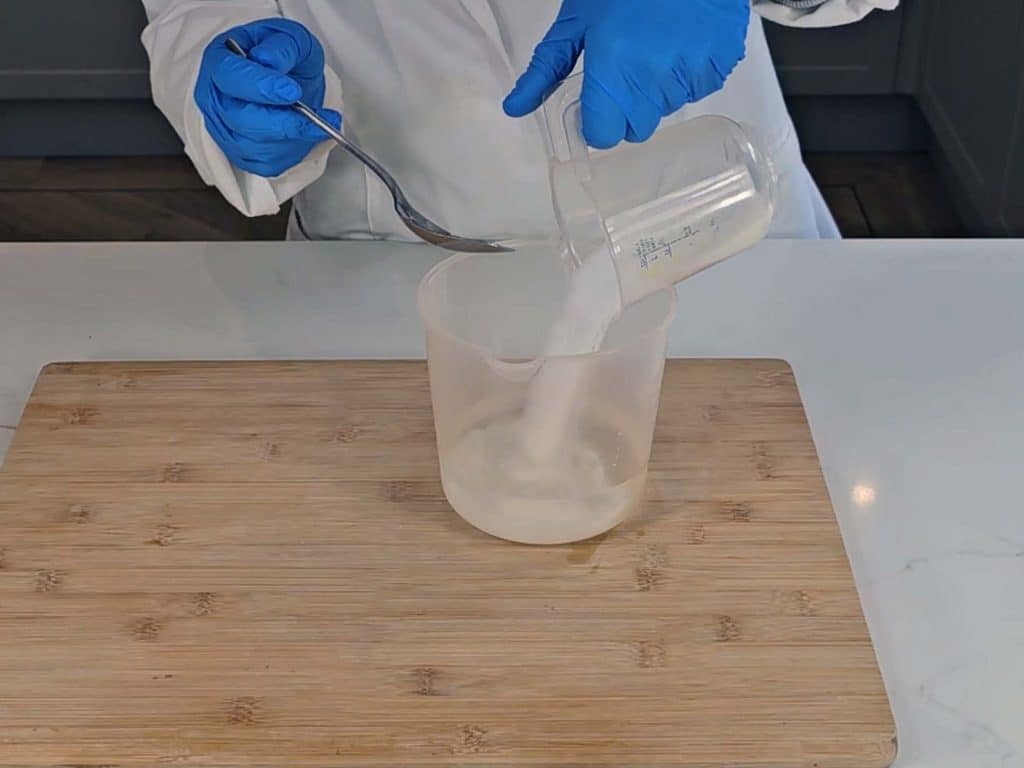
- Stir until the lye crystals have dissolved and the water looks fairly clear. Now, place it to one side, somewhere well-ventilated but safe so that it will not be knocked over. Allow it to cool to around 90°F (32 °C) as we get on with our other steps.
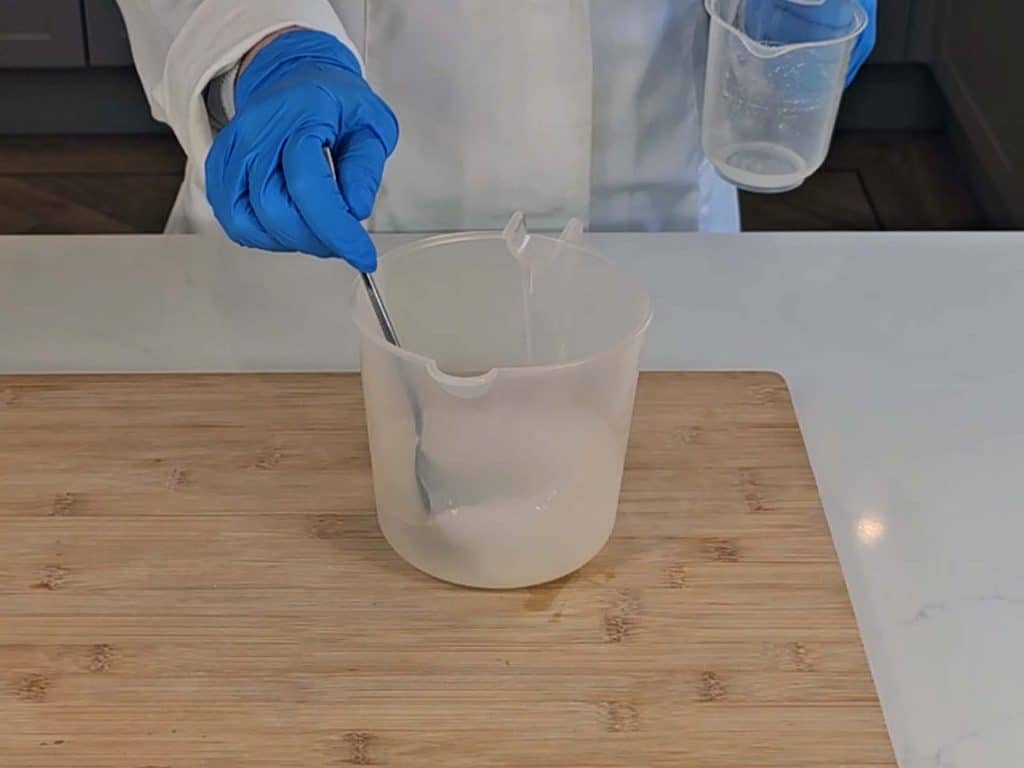
Mixing Our Oils
- Place the solid oils, coconut, tallow, and cocoa butter into a container for melting. The oils can be melted in a saucepan or the microwave using short bursts. Don't overheat them, you want them just melted.150 grams Lard, 180 grams Coconut Oil, 45 grams Cocoa Butter
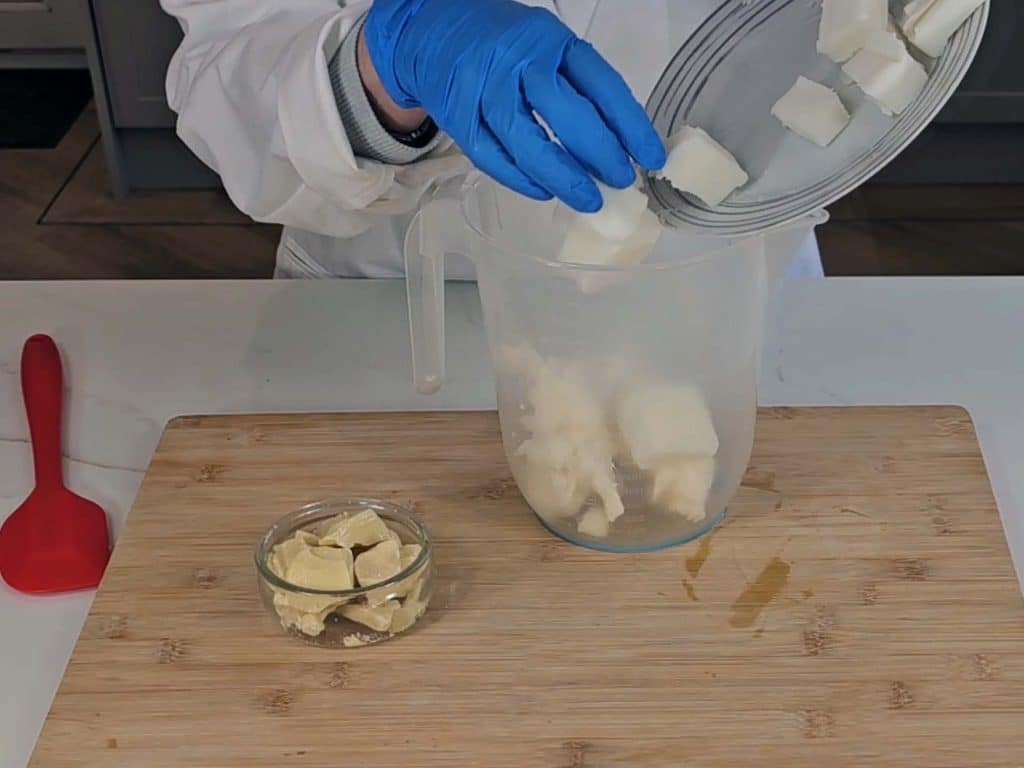
- Once the oils have melted, you can add the liquid oils to them. This would be the olive and caster oil. All your oils should now be together and in liquid form.465 grams Olive Oil
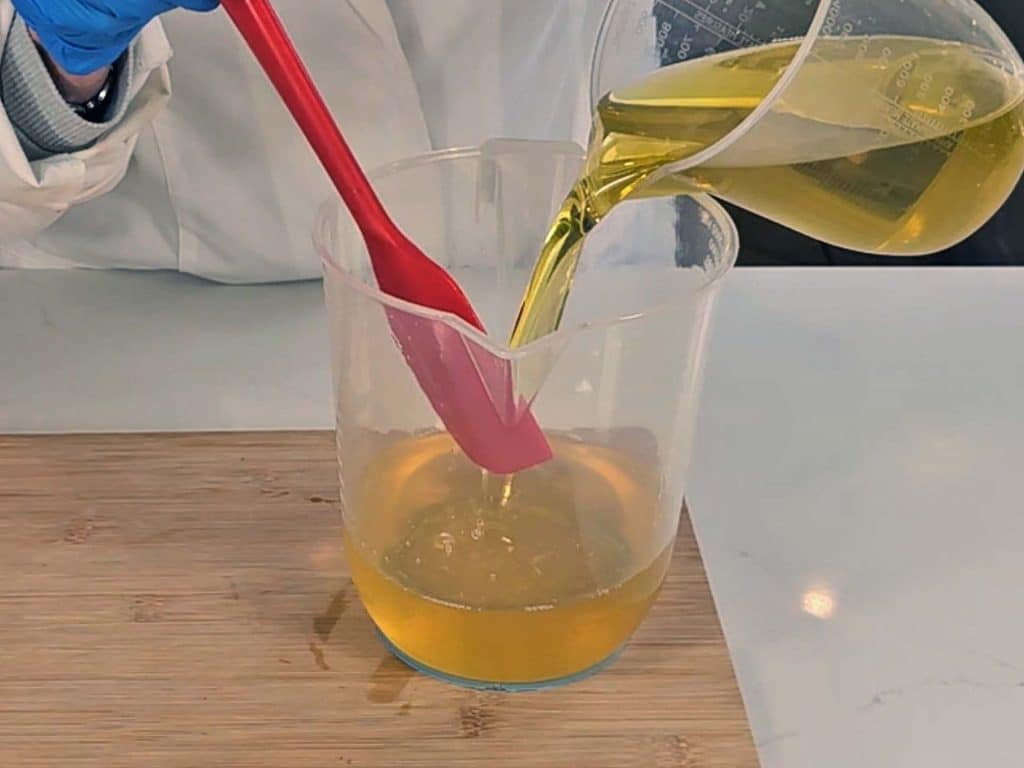
- Grab the container holding the mica. Remove 1 tablespoon of the warm oils and add it to the mica. Mix thoroughly, then set it aside once again.1 tsp Mica Powders
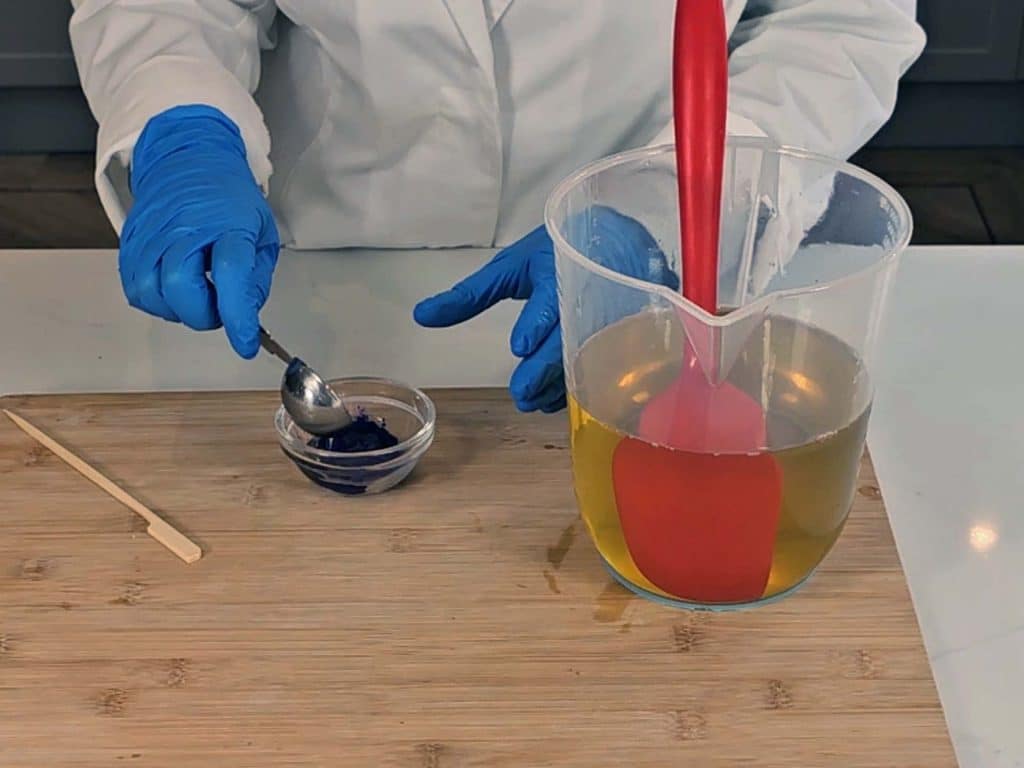
- Let the warmed, melted oils cool to below 90°F (32°C), then add the powdered goat's milk. Stir until well blended. You can use a stick blender if desired.2 tbsp Goats Milk

Mixing Oil With Lye
- Once both your lye water and oils have cooled to around 90f to 80°F (32 to 26c) it's time to combine them, so go ahead and pour your lye solution into your oils.

- Before turning on the stick blender to mix the oils and lye, gently tap the stick blender against the bottom of your container. Continue tapping until all the air bubbles have been released.Then, turn on the stick blender and blend until the oils are fully emulsified into the lye solution. Then switch off the blender and check for trace. This is when you can drizzle a small amount of soap batter on top, leaving a visible trail or 'trace' on the surface.
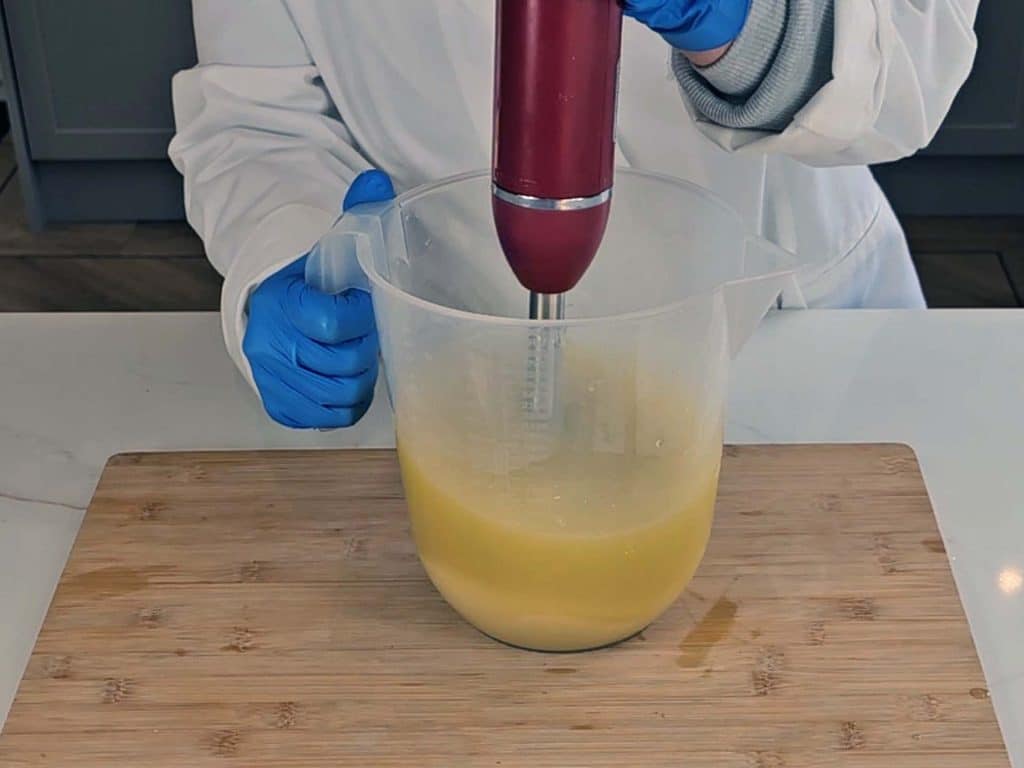
Reaching Trace
- Now that we’re at trace, it’s time to add our essential oils to the soap batter. Once added, give it a good mix to make sure they are well combined.
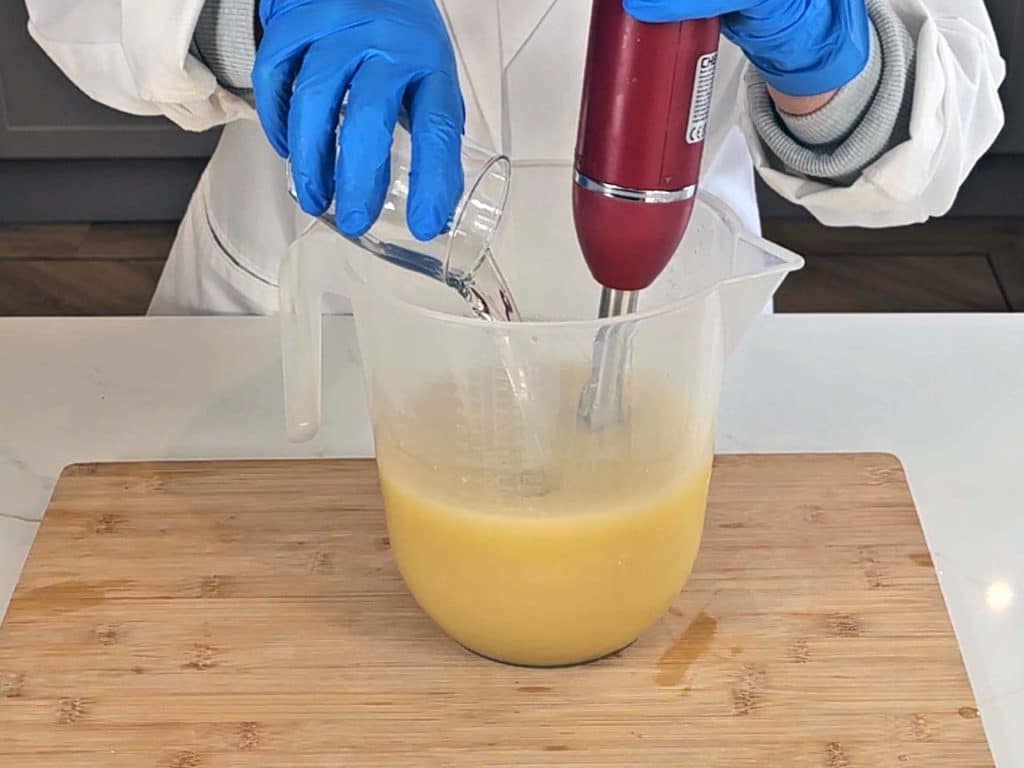
- Divide the mixture into two jugs, making one slightly bigger than the other but not by much.
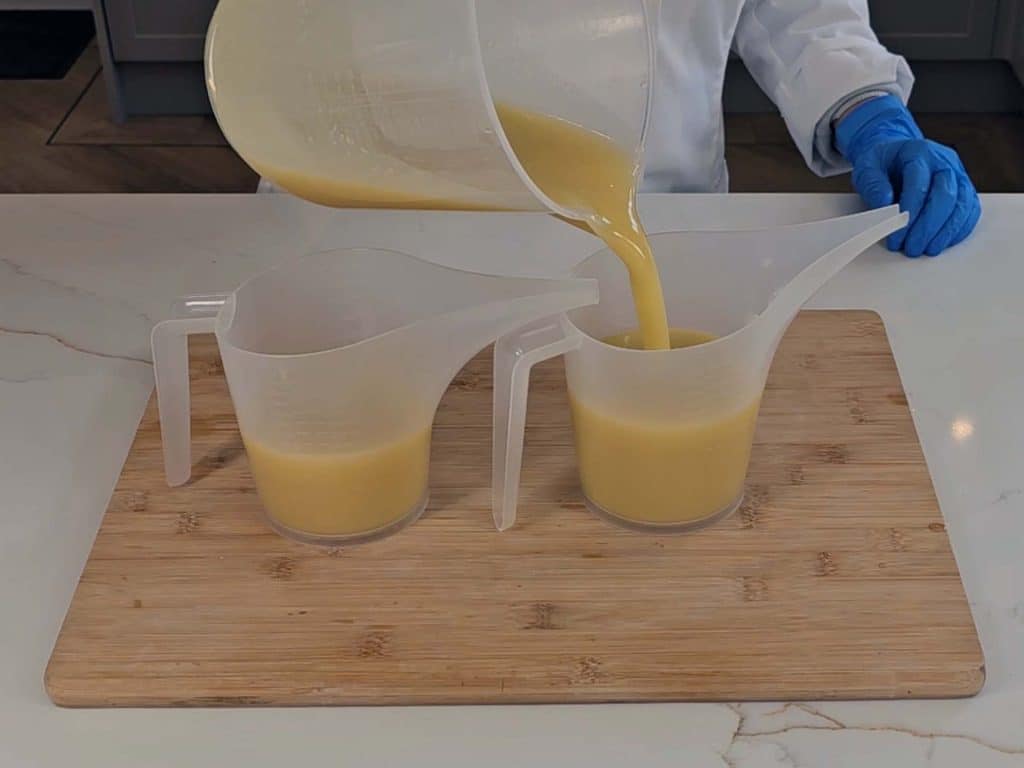
- Add the purple mica to the smaller jug of soap batter, and give both jugs a quick blend. The purple portion of the batter should be brought to a good, thick trace, as it will serve as the base layer. It needs to be firm enough to support the second layer that will be poured on top of it.
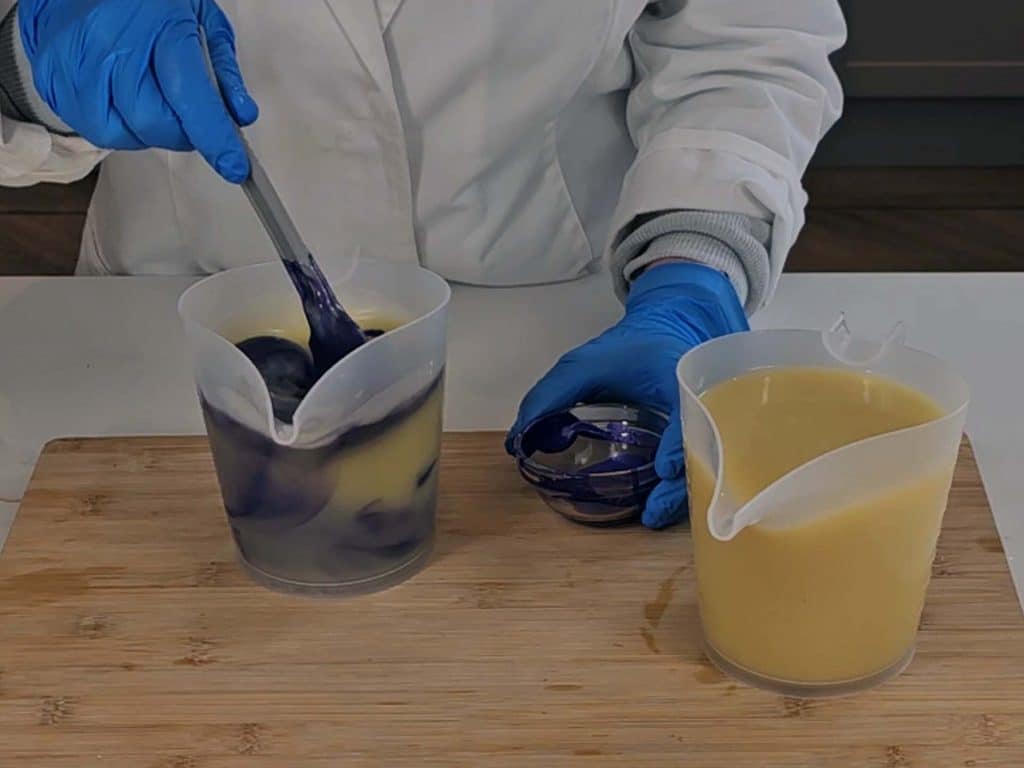
Pouring Into Mold
- Once you are satisfied with the viscosity of the batter, pour the purple mixture into the mold, giving it a tap to level it. Be sure to reserve a small amount, as this will be spooned over the top of the soap later to create an interesting finish.
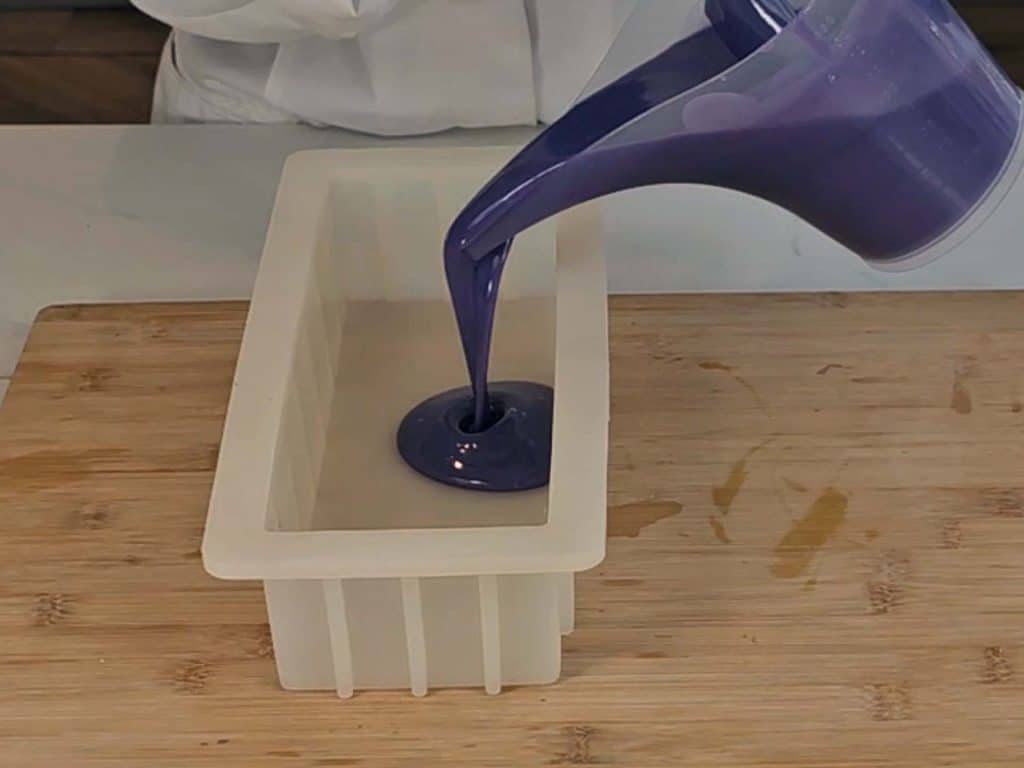
- Carefully pour the second jug of uncoloured batter over the purple layer, leveling it out if needed.
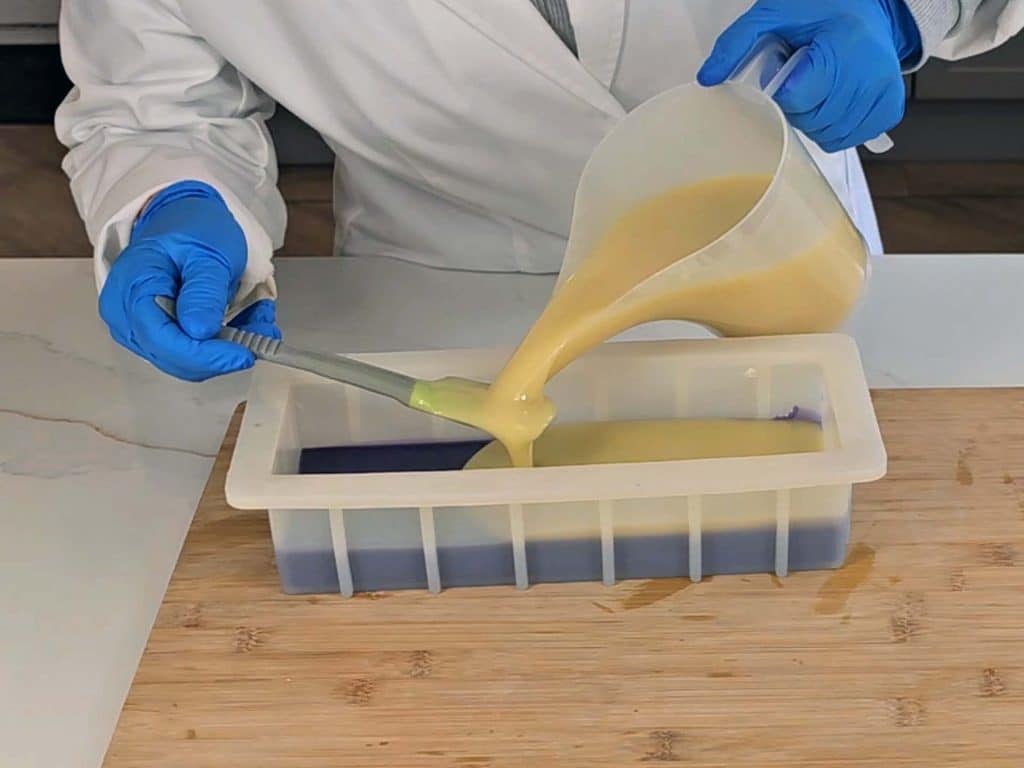
- Spoon the remaining purple batter on top of the soap. It doesn't need to be uniform, simply dollop it in various spots.
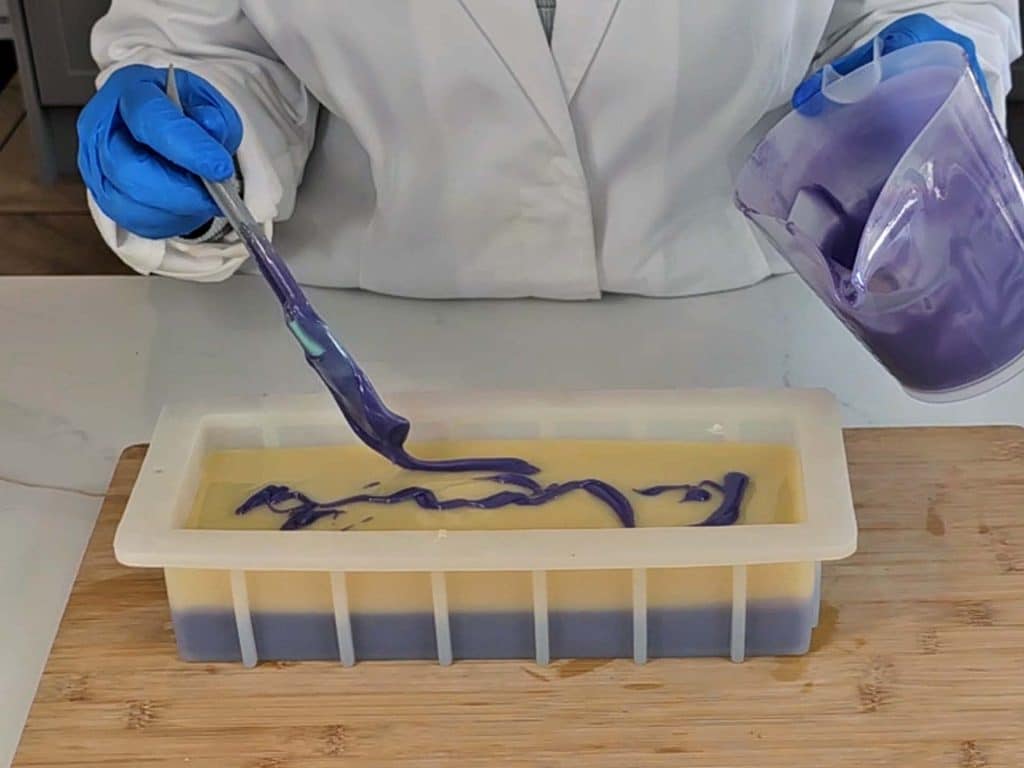
- Use a skewer or the handle of a paintbrush to gently swirl the top, blending some of the purple topping with the uncoloured batter for a marbled effect.You can also create a waved texture on the surface using a spoon. This step is entirely optional and depends on your personal style preference.
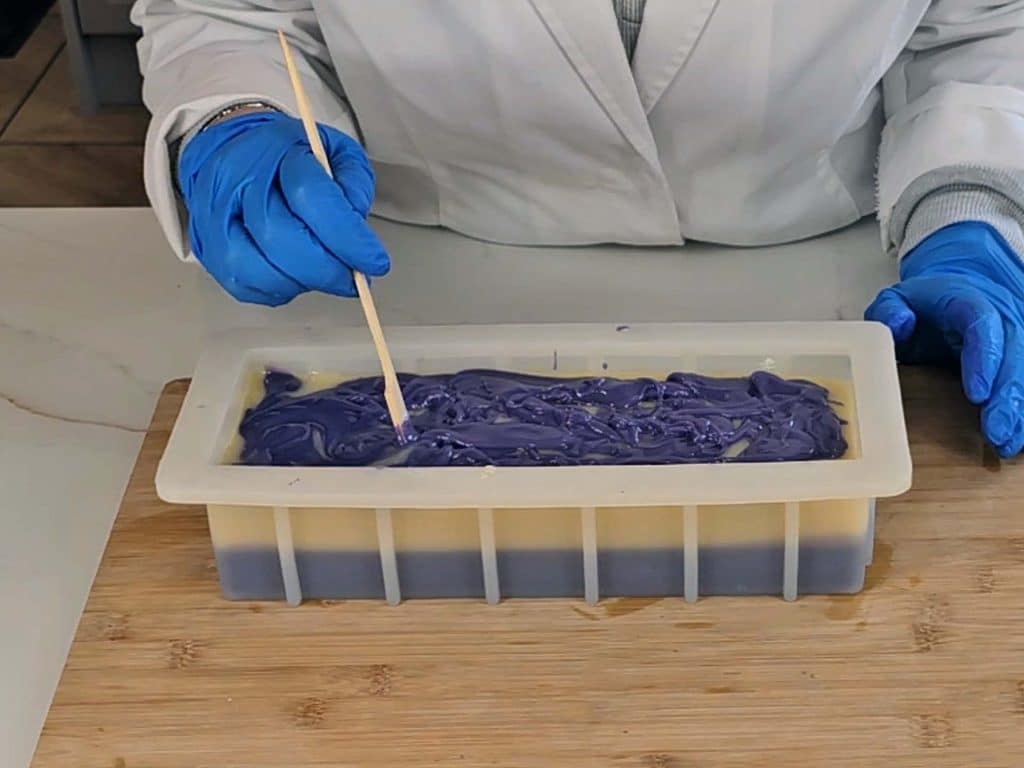
Cutting & Curing
- Goat’s milk can overheat and cause discoloration in the finished soap, so it’s important to keep it cool as it solidifies. Cover the soap with plastic wrap and place it in the refrigerator for 24 hours to help maintain a low temperature. After this period, remove the soap from the refrigerator and let it sit at room temperature for another 24 hours before unmolding.
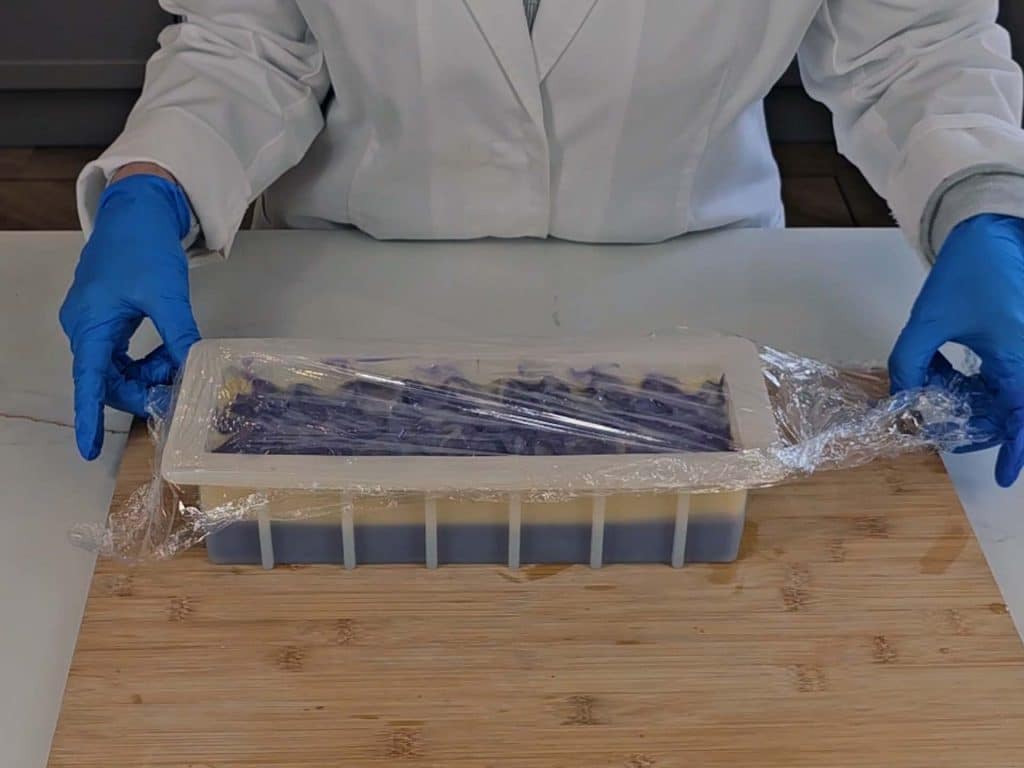
- When the soap is ready, remove it from the mold and cut into bars. This can be done using a soap cutter or a sharp knife. You should get between 5 to 6 bars, depending on the thickness of the cut.
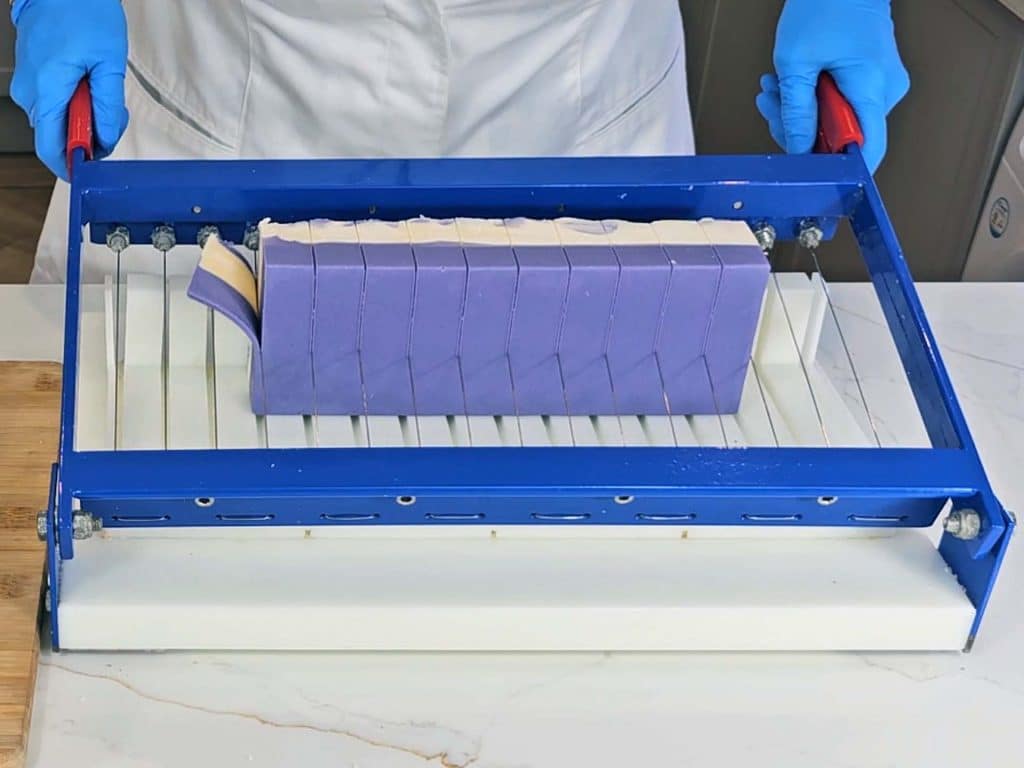
Tried this projectMention @Savvyhomemade or tag #savvyhomemade!